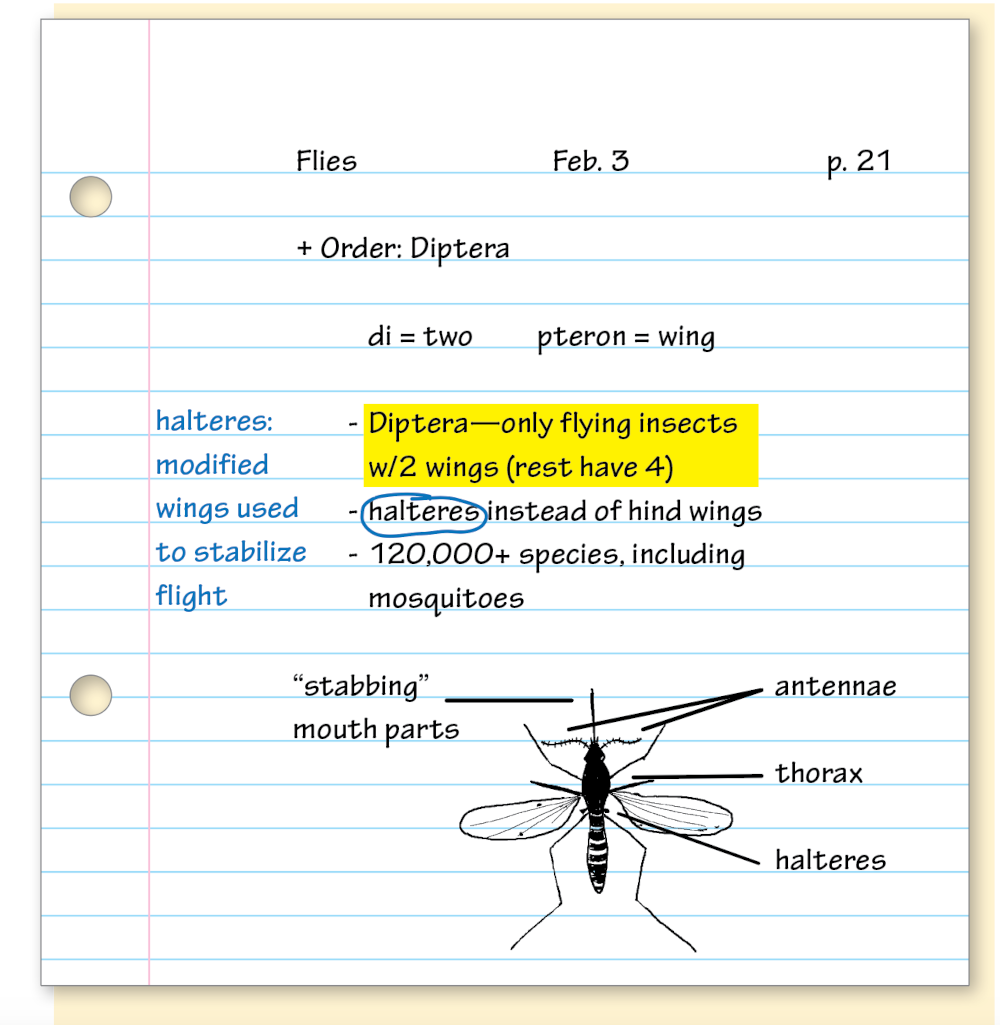WOC 463
Page 463
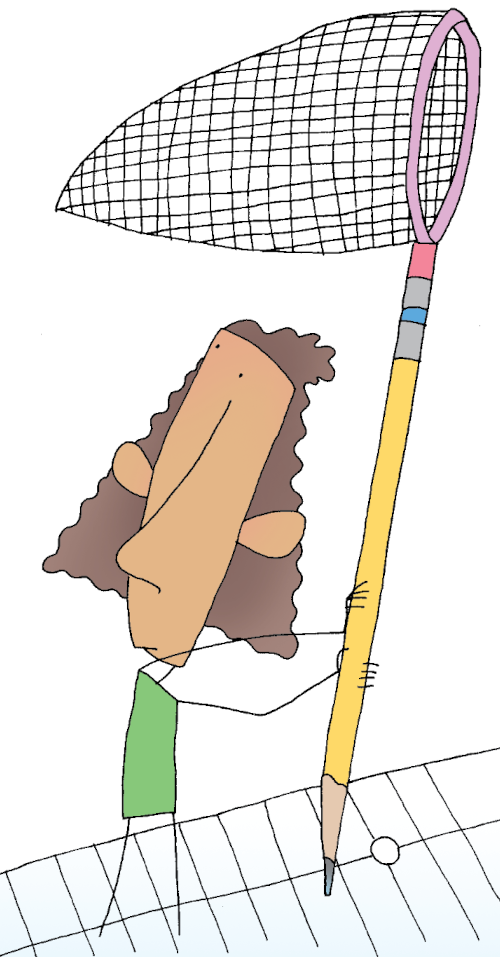
Taking Notes
All day long, new concepts fly at you through the air. Words, words, words . . . other people’s words. To learn, you have to catch those concepts and make them your own.
Notetaking lets you do just that. Words drop out of the air, funnel into your ears, mingle in your mind, zap down your arm, and pour out of your fingers onto the page. You write new words and create drawings and graphics. Notetaking is more than simply recording what you hear and read. It is the process of turning others’ thoughts into your own.
In this chapter, you’ll learn strategies for getting the most out of your your notetaking.
What’s Ahead
WOC 464
Page 464
Setting Up Your Notes
When your class notes are very different from your reading notes, divide your notebook page into two columns. This approach leaves one large column for classroom or reading notes, and a second column for review notes (see page 468).
Two-Column Notes
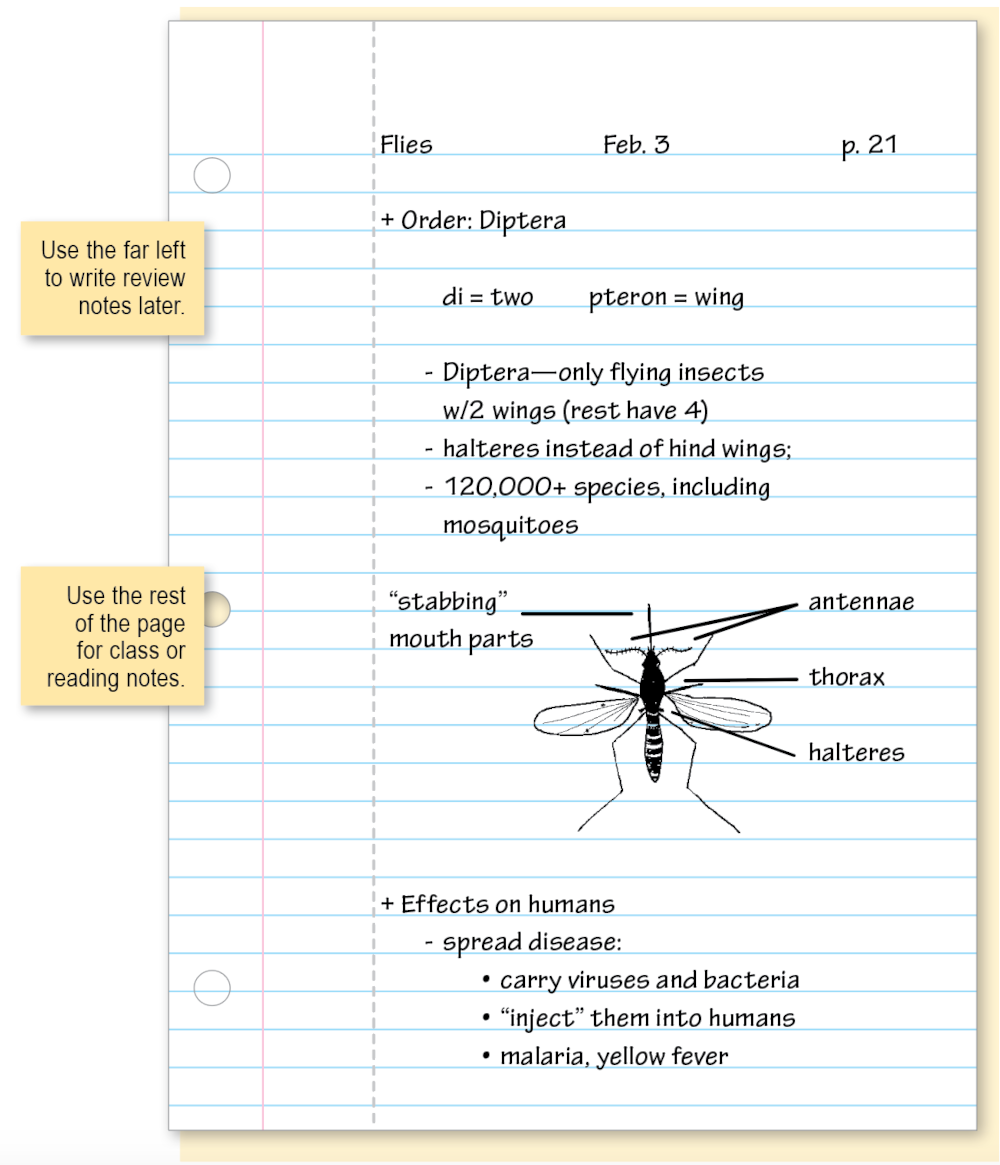
WOC 465
Page 465
Three-Column Notes
You can use a “three-column” format if your classroom lectures or discussions closely follow your reading assignments.
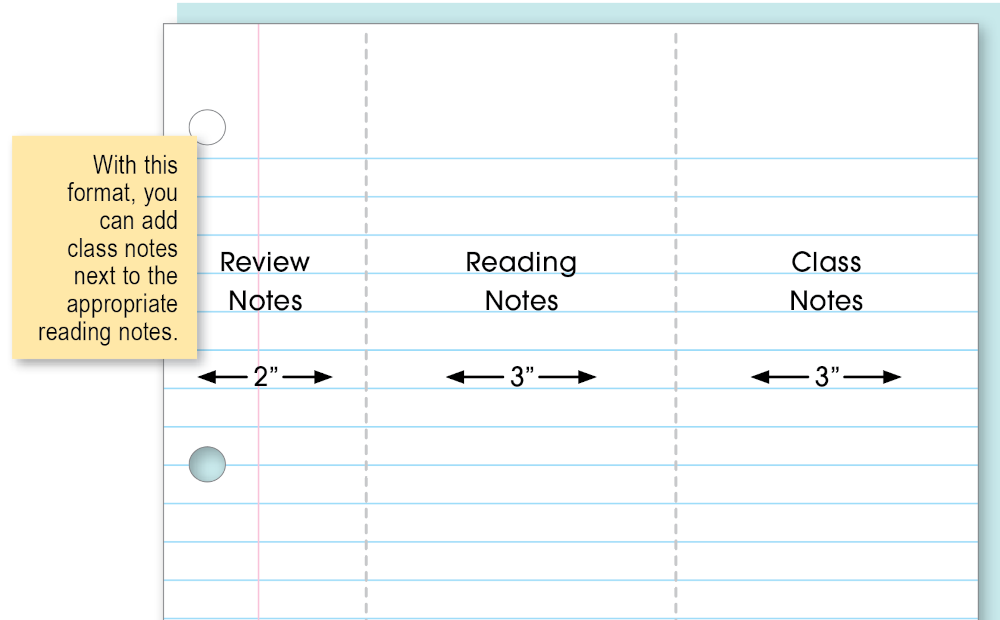
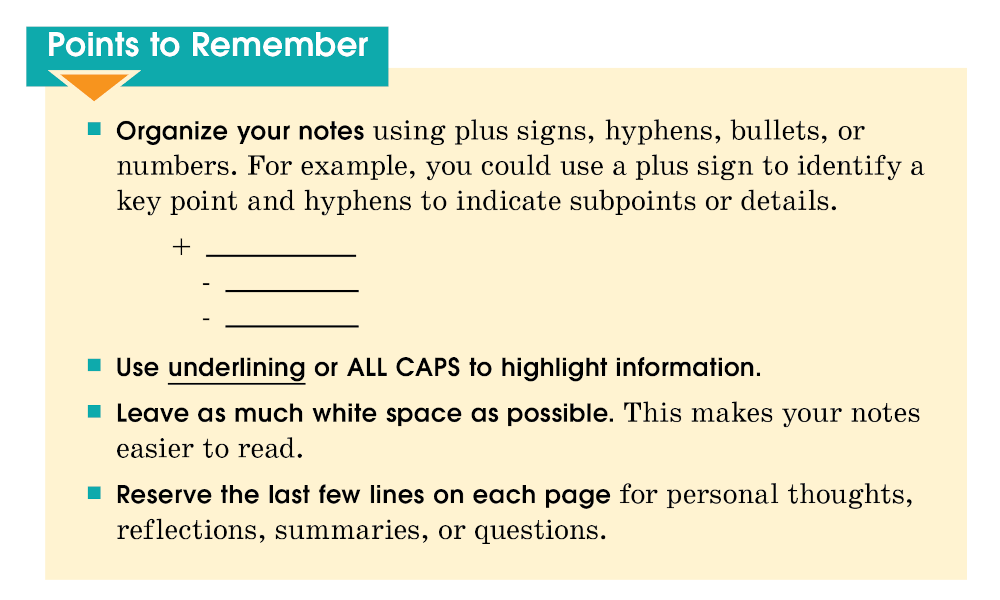
WOC 466
Page 466
Taking Classroom Notes
The following tips will help you take notes when your teacher introduces a new unit or reviews important information for a test. Your ability to remember and understand this information increases greatly if you take good notes.
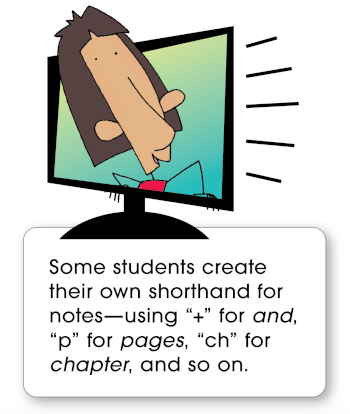
- Write the topic and the date at the top of each page. You may also want to number each page of notes. Then, if a page gets out of order, you’ll know exactly where it belongs.
- Listen carefully for important clues during the lecture. Your teacher may say, “I’m going to explain the three branches of the federal government.” This clue tells you to listen for the names of the three branches.
- Write your notes in your own words. Don’t try to write down everything the teacher says.
- When you hear a word that is new to you, write it down. Don’t worry about spelling. Just make your best guess.
- Draw pictures to help you remember things better. Don’t try to write down everything the teacher says.
- Listen for key words such as first, second, last, most important, and so on.
- Pay close attention to what the teacher writes on the board. Write key details (names, dates, special terms, page numbers, and so on) word for word, but put most other information in your own words.
Helpful Hint
The real secret to taking good notes is listening. Don’t get so busy writing that you forget to listen. If you listen carefully, you will hear details that you can add to your notes later.
WOC 467
Page 467
Taking Reading Notes
Taking notes while you read is usually easier than taking notes while you listen to someone talk. As you read, you can stop anytime to write a note or to look up additional information. Here are some tips for taking reading notes:
- Preview the assignment. Read the title, introduction, section headings or subtitles, and summary. Look at any pictures, charts, and maps. This information will tell you what the reading is about.
- Skim through the whole assignment once before you take any notes. Also, if there are questions that go with the reading, look them over before you begin.
- Take notes as you read the material again—this time reading more slowly and thoroughly.
- Write down only the important information and ideas.
- Try to write your notes in your own words. Don’t just copy from the book.
- You may write down each heading or subtopic, recording the most important facts under each heading. (Pay close attention to words in boldface or italics.)
- Remember to take notes about important pictures, charts, or maps. You may also make drawings of your own.
- Use graphic organizers. (See page 35.)
- Make a list of new words. Also write down the page number where you found each word. Look up each word in a glossary or dictionary. Choose the meaning that best fits the way the word is used and write it in your notes.
- Summarize aloud the main points of the reading, and then write them down.
- Finally, write down any questions you have for your teacher.
Helpful Hint
Turn to “Study-Reading Strategies,” beginning on page 372, for more ways to take notes while you read.
WOC 468
Page 468
Reviewing Your Notes
Look over your reading and classroom notes each day.
- Circle the words and phrases that you don’t understand and look them up in a dictionary or the glossary of your textbook. Then in the margin of your notes, write each word (spelled correctly) and its meaning. (See the example in blue below.)
- In the margins of your notes, write any questions you may have. Talk over your questions with a classmate or your teacher. Then write down what you’ve learned.
- Use a highlighter to mark important parts of your notes.
- Rewrite your notes if they are sloppy or if you want to reorganize them.
- Review your notes again before the next class.
